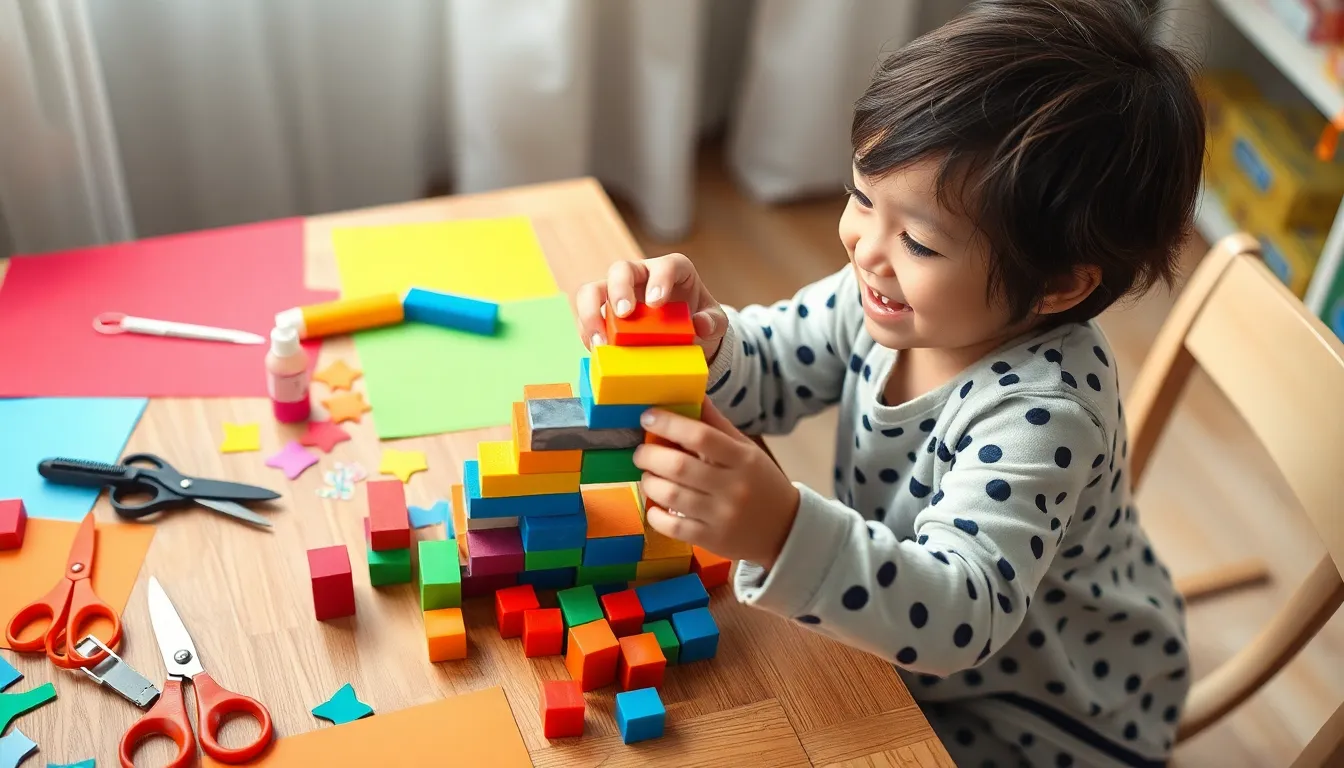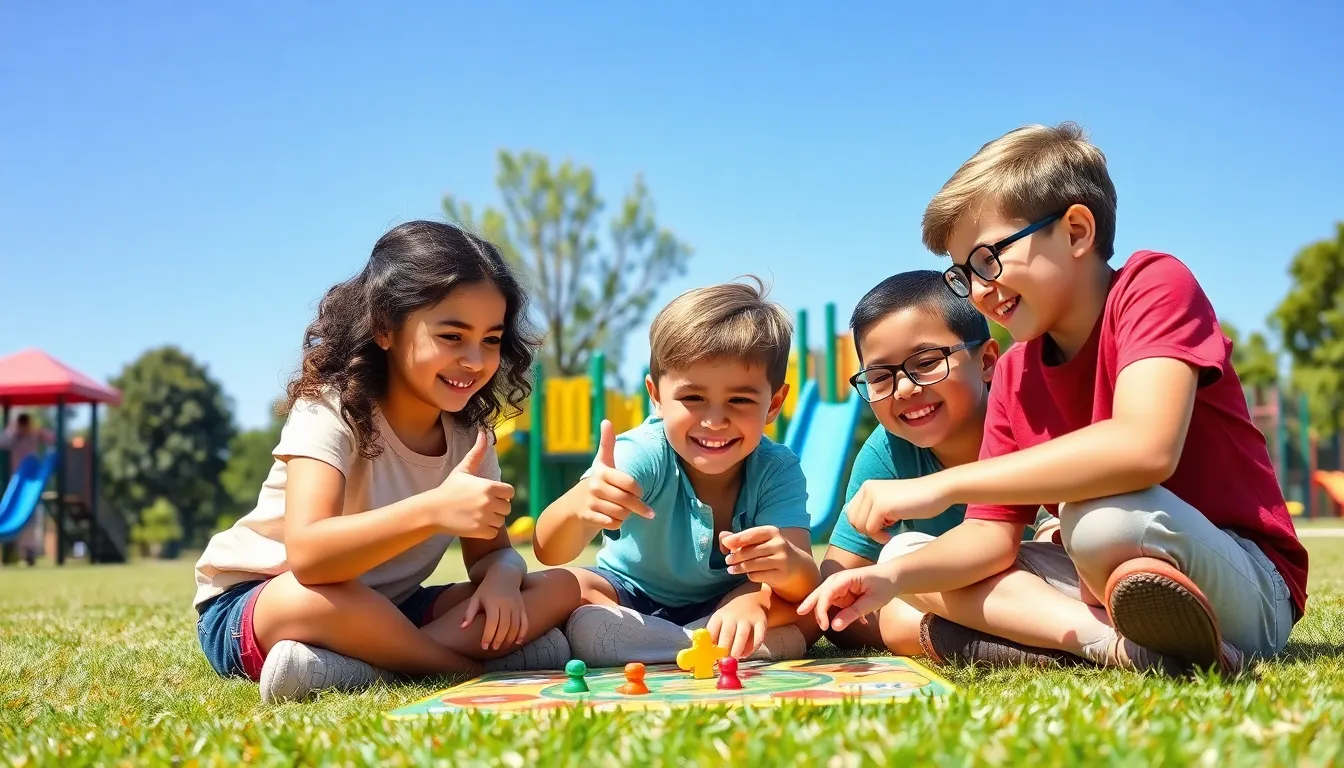Crafting isn’t just for rainy days or Pinterest boards; it’s a gateway to learning that’s as fun as it is educational. Picture this: kids immersed in a world of creativity, transforming everyday materials into masterpieces while sneaking in some serious knowledge. Who knew that making a paper mache volcano could also teach them about geology?
Table of Contents
ToggleWhat Are Educational Crafts?
Educational crafts encompass a variety of creative activities that serve to enhance learning while fostering creativity. Children gain hands-on experience when they engage in projects like building models or painting. They develop fine motor skills through tasks that require cutting, gluing, and assembling materials.
Learning concepts in science, math, and art becomes more tangible with such activities. For instance, constructing a paper mache volcano not only allows for artistic expression but also introduces fundamental concepts in geology. Crafting activities facilitate problem-solving skills as children plan, execute, and refine their projects.
Crafts can also assist in improving critical thinking. Young minds analyze materials and processes, allowing them to make choices based on trial and error. Engaging in group projects fosters teamwork, as children collaborate and share their ideas.
In addition, educational crafts often incorporate cultural elements. Exploring traditions through craft projects enables children to understand diversity. For example, creating origami introduces Japanese culture while enhancing spatial awareness and patience.
Research shows that integrating crafts into educational settings supports cognitive development. By implementing these activities into lessons, educators create dynamic learning environments. Benefits continue as crafting promotes emotional expression and self-confidence, too.
Educational crafts combine fun with learning, transforming abstract concepts into concrete experiences that resonate with children.
Benefits of Educational Crafts

Educational crafts provide numerous benefits that support a child’s growth and development across various domains.
Cognitive Development
Cognitive development flourishes through engaging in educational crafts. Children learn problem-solving skills by navigating challenges in projects. They enhance critical thinking while evaluating different materials and techniques. Craft activities introduce concepts like geometry and physics through practical applications, such as building structures. Additionally, children grasp scientific principles as they experiment with various elements, like chemical reactions in baking soda volcanoes. Research shows that hands-on creativity significantly improves memory retention and understanding of complex ideas.
Motor Skills Enhancement
Motor skills enhancement occurs naturally when participating in educational crafts. Fine motor skills improve as children cut, glue, and assemble materials. Coordination gets a substantial boost through activities like painting or threading beads. Engaging in crafting requires the manipulation of various tools, strengthening hand-eye coordination. Activities that involve shaping clay or folding origami also develop dexterity. Enhanced motor skills play a crucial role in a child’s overall development and academic success.
Creativity and Imagination
Creativity and imagination flourish within educational crafts. Children express their ideas freely while experimenting with colors, textures, and shapes. Engaging in varied craft projects encourages original thought and innovation. Each project presents an opportunity for self-expression and storytelling, aiding in emotional development. Collaboration during group crafts fosters not only creativity but also communication skills. Ultimately, crafting stimulates imaginative thinking, enabling children to visualize concepts beyond the traditional learning framework.
Types of Educational Crafts
Educational crafts encompass various activities tailored to enhance learning and creativity. These crafts vary based on age groups and seasonal themes, engaging children through inspiring hands-on projects.
Arts and Crafts for Different Age Groups
Different age groups benefit from specific crafts aligned with their developmental stages. Toddlers enjoy simple activities like finger painting, which nurtures sensory exploration. Preschoolers embrace more structured tasks, such as making collages, allowing them to practice fine motor skills. Elementary-aged children thrive on projects like building model ecosystems, deepening their understanding of biology. Older kids engage in complex crafts, like creating intricate origami, which promotes patience and precision. Adapting crafts to suit age ensures each child experiences appropriate challenges and learning opportunities.
Seasonal Crafts and Activities
Seasonal crafts provide thematic learning experiences tied to specific times of the year. In spring, children can create nature journals to document budding plants, integrating biology and art. Summer activities often involve building birdhouses, offering lessons in woodworking and wildlife care. Autumn presents the perfect opportunity for leaf rubbings, reinforcing concepts in science and patterns. Winter crafts may include making holiday ornaments, fostering creativity while exploring cultural traditions. Each season offers unique educational crafts that enhance engagement and nurture children’s appreciation of their environment.
Tips for Creating Educational Crafts at Home
Engaging children in educational crafts involves careful planning and resourcefulness. Begin by selecting age-appropriate materials to ensure safety and accessibility. For toddlers, use non-toxic paints and larger items like cardboard or paper rolls. Preschoolers benefit from scissors designed for small hands, while older kids can explore complex tools, such as hot glue guns, with supervision.
Incorporating educational elements enhances the learning experience. Teach kids about science through projects like creating simple circuits with batteries and copper tape. Introduce math concepts by building geometric shapes with straws or blocks. Art can thrive in these projects, promoting creativity with unique designs and color combinations.
Setting up a dedicated crafting space makes activities more inviting. Organize supplies in bins or baskets, allowing easy access to items like paper, markers, and glue. Keeping the area tidy encourages children to take responsibility for their materials, reinforcing organization skills.
Encourage collaboration during craft sessions to develop teamwork. Working in pairs or small groups fosters communication skills and helps children learn to share ideas. Emphasize the importance of feedback, allowing them to discuss their creations and suggest improvements.
Scheduling regular crafting days can build anticipation and structure. Plan sessions around holidays or seasons to tie into thematic projects, such as building a birdhouse in spring or making holiday decorations in winter. Provide examples or visuals to inspire creativity and demonstrate possible outcomes.
Lastly, celebrate finished projects to boost self-esteem. Display crafts around the house or create a gallery wall for children’s work. Acknowledging their efforts fosters pride in their accomplishments, encouraging ongoing participation in educational crafts.
Crafting offers children a unique opportunity to learn while having fun. Through hands-on activities, they not only grasp complex concepts but also develop essential skills that will benefit them throughout life. Engaging in educational crafts nurtures creativity and critical thinking, allowing kids to express themselves and collaborate with others.
By integrating crafting into their routines, parents and educators can create enriching experiences that enhance cognitive and emotional development. Whether it’s seasonal projects or age-appropriate tasks, the possibilities are endless. Embracing educational crafts can transform learning into an enjoyable adventure that leaves a lasting impact on a child’s growth.




